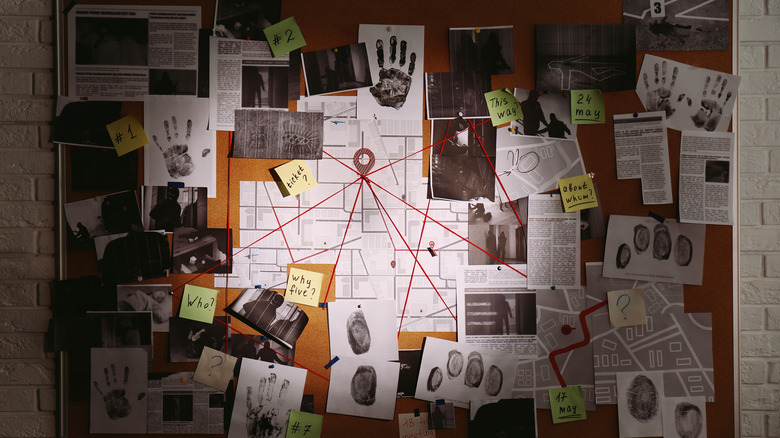The Unsettling Amount Of Unsolved Murders Since The 1960s Will Turn Some Heads
America's police are getting worse at solving murders — and the list of cold case files is steadily mounting. According to CBS News, 2020 was a particularly bad year for unsolved murders, with only around half of all cases being cleared that year.
During the pandemic in 2020, the U.S. saw an unusually dramatic spike in homicides — the last huge spike of this kind was in 2001, according to Pew Research, and those figures included casualties from the twin towers disaster. Even then it was nowhere near as high as 2020's rise, which put the murder rate at 7.8 deaths per 100,000 people.
Many commentators have pointed out that the sheer amount of homicides in 2020 may account for the low homicide clearance rate — the rate at which homicide cases are solved whether the perp is arrested or not (via The Marshall Project). However, statistics show there has been a downward trend in solving cases for decades.
Back in the 1960s, according to The Atlantic, the clearance rate for homicide sat at a very healthy 90%. But the Project Cold Case found that by the 80s the clearance rate for cases had already dropped to between 68-76%, and by the aughts, it had fallen even further, to between 59-64%.
The burden of proof
But what's to blame for this dramatic decline? Police officers have pointed to the logjam of cases they still need to solve, as well as the increasing mistrust of the police nationwide (via CBS News). This mistrust may not be unwarranted, given the fact that the police are far more likely to solve your murder if you are white.
On the other hand, it is also possible that the apparently amazing rate at which the police solved murders in the 1960s was simply a lie and the police have always struggled to solve murders. In an interview for The Atlantic, analyst Jeff Asher notes that in the 60s and 70s police departments were held far less accountable, and in all likelihood fudged their numbers, or threw the wrong people in jail.
It is also possible that the standard of evidence needed to make a case nowadays is simply higher than before. In 2009 the ground-breaking NAS report criticized many techniques used as forensic evidence in court demanding a higher standard of proof (via Science), which has had a knock-on effect on law enforcement. The hunt for evidence has also been complicated by the increased use of guns in murder cases — murders by gun are harder to solve than those that involve stabbing or blunt trauma (via The Marshall Project).
The golden age of murder
According to Project Cold Case, around 185,000 murder cases remain unsolved from between 1980 and 2019 alone. While the reported figures for unsolved murders may make your hair stand on end, it is worth remembering that despite 2020's sudden increase in murders and unsolved cases, the worst time for homicides in the U.S. is still the early '90s. Since then murders have declined overall (via Project Cold Case). In general, the period between the 1970s and 2000s in the U.S. has been dubbed "the golden age for serial killers" (via Rolling Stone). Among some of the most troubling unsolved cases from this period are the Zodiac Killer case and the Babysitter killer case from Oakland county (via HowStuffWorks).
Although it may not make you feel much better, it is also worth pointing out that while the clearance rate for murder is low, the police are still much better at solving murders than other crimes (via The Marshall Project). The vast majority of burglaries and petty thefts, for example, are never actually resolved.
Those who have trouble sleeping at night might consider moving to a state with a strong policing record that bucks the national trend. Per Badger Project, peaceful Maine for example has the highest homicide clearance rate in the U.S. for the years 2011-2020, clearing 86.4% of murders in 2019 alone (via Maine).


